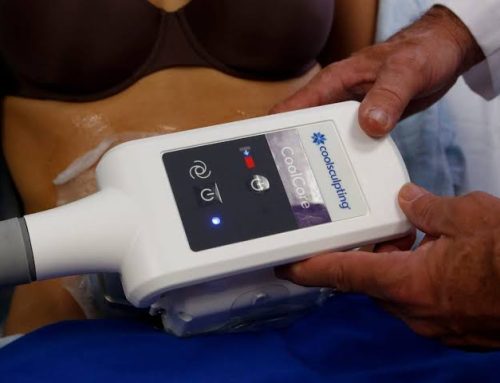Introduction
Breast reduction surgery offers a life-changing solution for those experiencing the physical and emotional burden of excessively large breasts. This procedure can improve not only the size and shape of your breasts but also alleviate pain and discomfort often associated with the excess weight of the breast tissue. However, a successful recovery process is crucial to achieving the best possible results.
How to prepare for Breast Reduction surgery?
- Choose the Right Surgeon: Your journey to a successful breast reduction begins with selecting a skilled and experienced plastic surgeon. Research potential surgeons, read reviews, and schedule consultations to find the one who is the best fit for you.
- Medical History: Provide your surgeon with a comprehensive medical history. This information is vital to optimize your health before the surgery and ensure that pre-existing medical conditions are adequately addressed.
- Smoking Cessation: Smoking can interfere with the healing process. It is crucial to avoid smoking for a minimum of four weeks both before and after surgery.
- Medications: Refrain from taking medications that contain aspirin for at least ten days before surgery. Aspirin is associated with an increased risk of bleeding during and after the procedure.
- Postoperative Caregiver: Arrange for a responsible adult to transport you home after the surgery and look after you for the first 24 hours. You may feel groggy, so having assistance during this time is essential.
- Informed Consent: Familiarize yourself with the consent form provided by your surgeon. This document outlines potential risks and complications associated with breast reduction surgery, ensuring you have a clear understanding of the procedure.
- Clothing: On the day of surgery, wear loose-fitting and comfortable clothing that fastens from the front. This will minimize discomfort when changing clothes after the procedure.

How long does it take to recover from a Breast Reduction?
- Preparation at Home: Before the surgery, create a dedicated recovery space in your home, preferably on the ground floor. This minimizes the need to navigate stairs in the initial days following surgery. Keep essential items nearby, including snacks, reading material, and prescribed medications.
- Sleep Position: After breast reduction, it is recommended to sleep on your back with your head in an elevated position. A recliner chair or propping yourself up with pillows can help minimize bruising and swelling and support healing.
- Nutrition: Maintain a balanced and healthy diet that includes plenty of fruits and vegetables. Opt for foods rich in nutrients like nuts, seeds, avocados, and lean sources of protein, such as chicken breast and fish. Avoid excessive salt, as it can lead to fluid retention and increased post-operative swelling.
- Caregiver: Enlist a responsible adult friend or family member to assist you with transportation after surgery and provide care for the first few days. This will help you get as much rest as possible.
- Hydration: Drink plenty of water to stay well-hydrated. This aids in flushing inflammatory toxins from your body, promoting a faster recovery. Avoid alcohol and fizzy drinks for at least two weeks after surgery.

How much bed rest after Breast Reduction?
- Rest and Relaxation: It is highly recommended to take a minimum of one week off from work, ideally two weeks, especially if your occupation is physically demanding. Rest is crucial for the initial stages of healing.
- Gradual Mobility: While it’s essential to stay mobile after surgery to encourage blood circulation and minimize the risk of deep vein thrombosis, avoid overexerting yourself. If you experience sudden pain or discomfort due to excessive activity, consult your surgeon immediately.
- Postoperative Instructions: Familiarize yourself with the postoperative instructions provided by your surgeon’s clinical team. This preparation will help you navigate the post-operative period and reduce the risk of complications.
- Compression Bra: After breast reduction, you should wear your postoperative compression bra continuously for a minimum of six weeks. This supports your breasts in the optimal position for healing, reduces bruising and swelling, and minimizes the risk of post-operative complications. After about eight weeks, transition to a well-fitted sports bra and avoid underwired bras for at least three months after surgery.

What I wish I knew before getting a Breast Reduction!
First 72 Hours:
- You’ll have sterile dressings on the incisions, which should remain in place for at least two weeks.
- A postoperative compression bra will be worn continuously to support proper wound healing.
- Light walks around the house are encouraged to promote blood circulation, minimizing the risk of deep vein thrombosis.
- Arrange for a responsible adult to assist with transportation and everyday activities for the first few days.
- Any postoperative pain and discomfort can be managed with prescription painkillers.
One Week:
- Some patients may be able to return to light work duties, particularly those with office-based jobs.
- Those with physically demanding occupations should take a minimum of two weeks off for adequate rest.
- You may still experience mild discomfort and breast tightness.
- Focus on eating healthy foods and stay well-hydrated.
Two Weeks:
- Some soreness and mild tenderness may persist, along with noticeable bruising and swelling.
- Incisions may feel itchy, but avoid scratching them.
- Avoid rigorous physical activity, but consult with your surgeon before resuming any exercise.
Four Weeks:
- Most pain should have subsided, with any remaining bruising and swelling significantly reduced.
- Begin gradually intensifying physical activities.
- Continue to avoid heavy lifting and wear the postoperative compression bra.
6-8 Weeks:
- Full recovery typically occurs within this timeframe.
- Most swelling has resolved, and you can transition to a sports bra.
- Strenuous exercise can be resumed, and you can enjoy the final results of your breast reduction.
Six Months:
- While everyone heals differently, most people feel fully recovered at this point.
- Any residual swelling should be minimal, and you can savor the long-term results of your breast reduction, which should alleviate neck, shoulder, and back pain.
Exercise After Breast Reduction:
- Avoid vigorous exercises, such as running, jogging, and upper-body engagement sports for six weeks after surgery.
Driving Post-Surgery:
- Do not drive until you can comfortably wear a seatbelt and perform an emergency stop without pain. This typically takes at least one week.
Bras and Undergarments After Breast Reduction:
- Wear a sports or surgical bra continuously for about eight weeks.
- Refrain from underwire bras, as they may irritate the incision area.
- Wear bras that fit well and provide adequate support once your incision sites have fully healed.

Conclusion
Recovery after breast reduction surgery is a crucial part of the process that ensures the best possible results. By following these step-by-step guidelines, you can take care of yourself and enjoy a smoother, more comfortable journey to recovery. Remember to consult your surgeon for specific instructions and to address any concerns or complications that may arise during your recovery period. Breast reduction can provide relief and confidence, and a well-managed recovery helps you make the most of your transformation.
Disclaimer: The content on this blog is intended for general informational purposes only. It is not a substitute for professional medical advice, diagnosis, or treatment. Always consult qualified healthcare providers for personalized advice. Information regarding plastic surgery, dental treatment, hair transplant, and other medical procedures is educational and not a guarantee of results. We do not assume liability for actions taken based on blog content. Medical knowledge evolves; verify information and consult professionals. External links do not imply endorsement. By using this blog, you agree to these terms.










